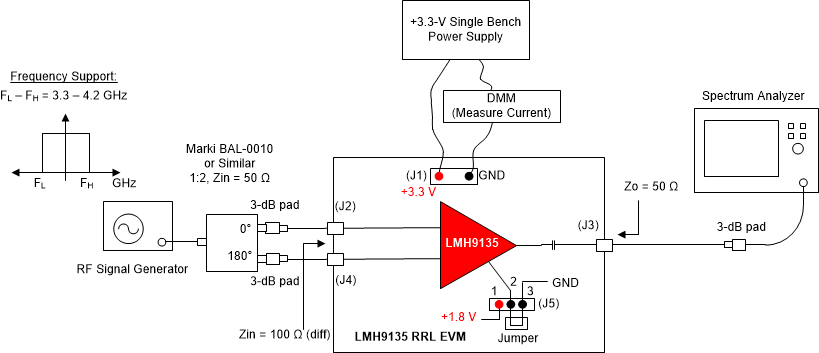SNLU284 May 2020 LMH9135
3.1 Single-Tone Measurement Test Setup
 Figure 3-1 Single-Tone Setup for Gain and Output P1dB (1-dB Compression Point)
Figure 3-1 Single-Tone Setup for Gain and Output P1dB (1-dB Compression Point)Use the following guidelines for single-tone measurement:
- The input to the EVM is differential. Differential signal is generated from the single-ended output of the signal generator using an external passive balun such as shown in Figure 3-1. Use of at least 3-dB attenuator pads are recommended at the differential ports of the balun for better matching with the board.
- The differential signals are fed into connectors J2 and J4.
- The RF signal generator used must support 3.3-GHz to 4.2-GHz signal frequency for testing out the LMH9135 EVM.
- When measuring the EVM for single-tone distortion products, TI recommends using an RF band pass filter (not shown in Figure 3-1) between the signal source and the balun.
- The output of the EVM from connector J3 is fed to the spectrum analyzer. An attenuator pad of at least 3 dB is recommended at the output port of the EVM.
- Lastly, it is recommended to properly characterize and account for the insertion loss of RF coaxial (coax) cables, attenuator pads, and passive baluns to measure accurate gain and power levels for the device.